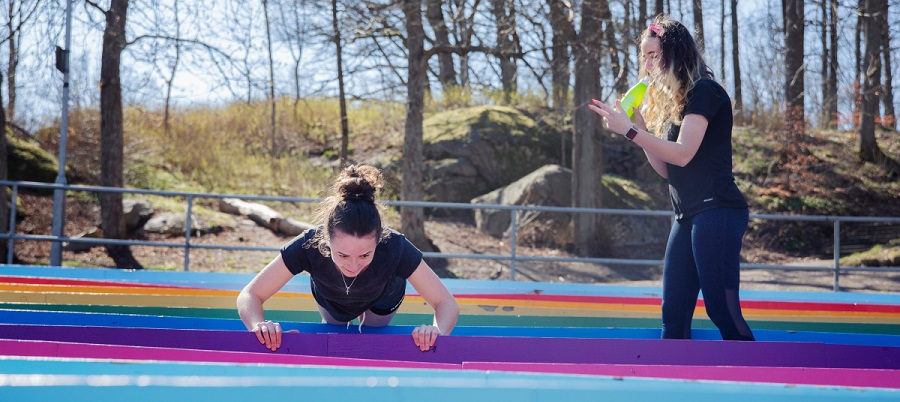
Your idea: Citizen’s budget in collaboration in Gothenburg
Description
The goal was to ensure that the participatory budgeting process in the area of Lundby was more inclusive, especially of the voices of young people. We wanted to achieve higher levels of equal participation and to incorporate diversity as a criterion for inclusion. The participatory budget is part of Gothenburg City’s strategic plan ‘Equal City’ – which places particular focus on the following areas:
– Creating the conditions for inclusion, influence and trust
– Creating a good start in life for young people and good conditions for growing up
Preparation
The area in Lundby where the participatory budget (PB) ‘Din Idé’ (‘Your Idea’) was held is a socially and economically disadvantaged area. In total 60 different languages are spoken in the local school and many parents do not speak Swedish. The municipality finds it difficult to reach out to residents in the area, and there is a lack of trust in public bodies among residents.
In the area there is a community school and several engaged housing companies. This was a good starting point. What was needed was a joint structure and model in order to work in a proactive, mobilising and democracy enhancing way to deal with the complex issues facing the neighbourhood. ‘Din idé’ is a participatory budgeting process run as a partnership between the
municipality, the community school and the local housing companies to work together to reach different arenas where children, young people and adults are active in the local area. It is an approach which allows diverse actors – such as schools, housing providers, community groups, preschools and libraries – to work together to deal with (rather than to ignore) the complexities of the local area. The starting point is the pre-existing local relationships that residents have with individuals in schools and housing companies – relationships that often come with a lot of trust.
By working in a broad partnership, the different actors can work with the residents to build trust and increase legitimacy. If there is trust between residents and one institution – for example the local school, then this can be the starting point for developing relationships and trust between the resident and other actors. The Din Idé process has used different ways of breaking through language barriers, making the process more approachable and to reach children and young people with cognitive disabilities and difficulties. This case study has been taken from the OIDP’s awards for Citizen Participation. The City of Gothenberg won a distinction in the OIDP awards 2021.
https://oidp.net/distinction/en/record05.2021.php
Role of young people
- Participants
- Beneficiaries
- Helpers
- Organizers
Positive aspects of the project/process
Examples of innovative tools used include:
- A Participatory budgeting dance with sign language that the children were
taught in school
- Film workshops offered to young people and adults as a way to help them
come up with proposals for improving their local area
- Each proposal in the participatory budget has had a picture of visual representation to go with the text In the first year over 80 proposals were submitted by residents that ranged in age between five and 78 years of age. Over 1000 votes were received and 7 proposals were successful and are being implemented. We have sought to look at each actor as part of a larger whole. By working with
equality.
Opinion after implementation
They have collaborated with the organization Digidem Lab, who have given process support in the project as part of a wider research project. They have conducted interviews and surveys with students to explore how the process has been for them. They have also interviewed teachers, property owners and project managers. We are conducting an evaluation right now. Questionnaire with teachers and preschool teachers, interview with the student council and interview with property owners. Even before the formal evaluation we can see anecdotal evidence of the participatory budgeting process in Lundby being able to reach a more inclusive range of participants than we have seen in other areas with more young people active in the process.
A few quotes
A teacher: It was easy to include the pupils. The participatory budget is a tangible way to show that
their voices are heard and that they can make a difference.
A quote from a student: Everyone was able to take part and decide
A Girl, 10 years old (the creator of one of the winning proposals):I was with my dad at a riding school this summer, but it was really crowded. So then I had the idea that we should have a riding school here instead where everyone can take part.
Links to examples of application forms, voting styles, tools
https://www.youtube.com/watch?v=CqEru0Kz7_c